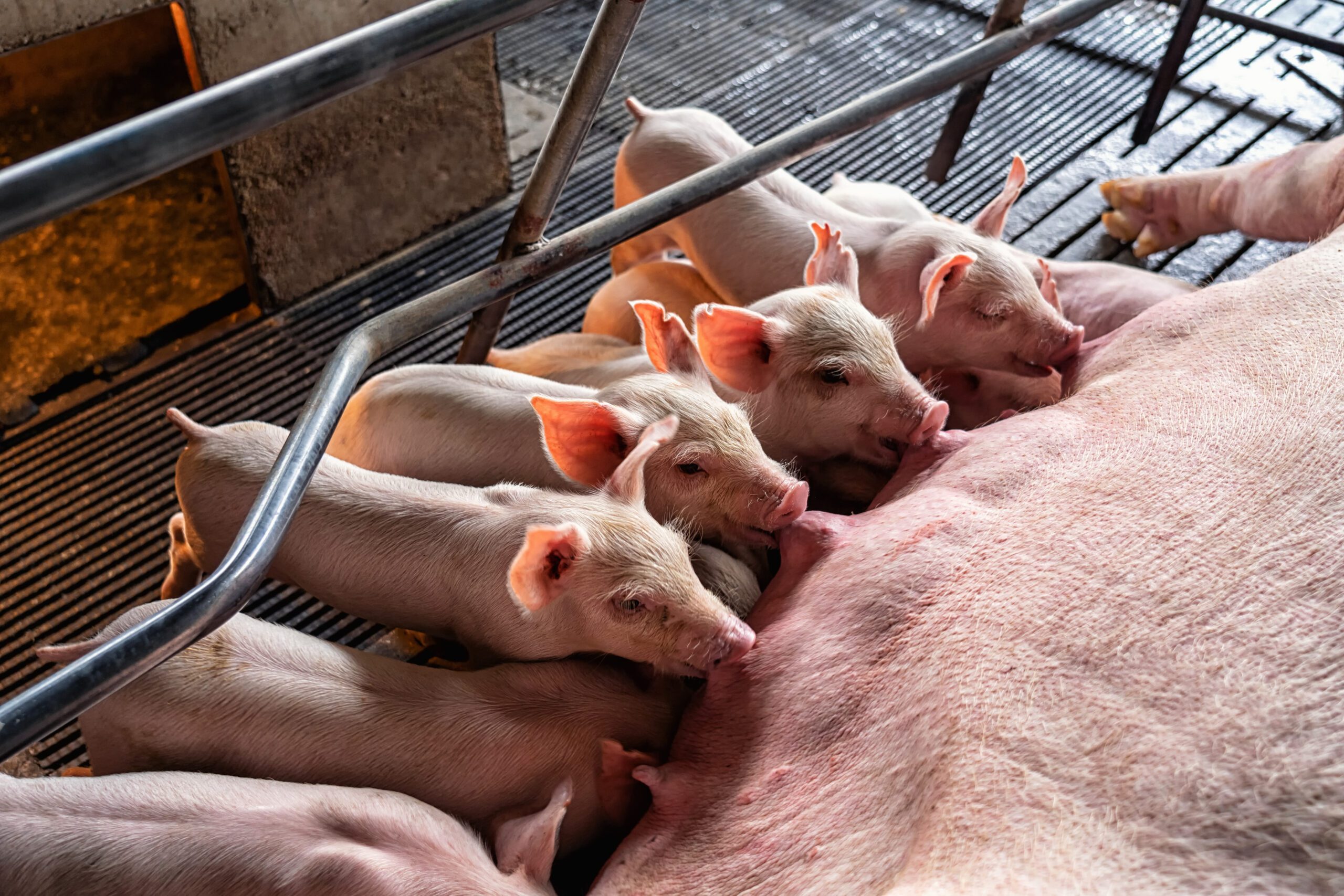Soybean meal (SBM) is comprised of isoflavones which possess anti-inflammatory and anti-oxidative properties that may provide nutritional intervention to pigs infected with porcine reproductive and respiratory syndrome virus (PRRSv). The disease results in abortions, stillborn piglets, and overall impairs reproductive success in sows. Today, there are no data available on feeding SBM to sows infected with PRRSv to mitigate the negative impacts of PRRSv on sow and litter performance. Therefore, the objective was to evaluate a potential advantage of feeding increased levels of SBM to lactating sows infected with PRRSv on sow and litter performance. A total of 960 sows were used for this study at an endemically PRRSv infected farm. There were 4 dietary treatments with 20%, 25%, 30%, or 35% SBM inclusion in the lactation diet. All dietary treatments were formulated to target 65 g of standardized ileal digestibility (SID) Lys and 24.1 Mcal of metabolizable energy (ME) intake per day regardless of SBM inclusion. Sow weight and body condition score (BCS) were recorded at entry to the farrowing room (d112 of gestion) and at weaning. Daily feed intakes of sows were recorded prior to farrowing and throughout lactation. The total number of pigs born, pigs born alive, stillbirths, and mummies were recorded for each litter within 24h of farrowing. Individual body weight of each piglet was collected at birth and weaning. Pig mortalities were recorded for the entire lactation period. Sows fed 20% SBM in the diet consumed at least 1.74 g/d more (P ≤ 0.05) SID lysine (63.72 g/d) compared to all other treatments (60.65-61.98 g/d). Sows fed 20% SBM consumed 0.57 Mcal/d more (P ≤ 0.05) ME (20.73 Mcal/d) compared to all other treatments (19.73-20.16 Mcal/d). The increase in ADFI resulted in the BCS at weaning to be at least 0.09 units greater (P ≤ 0.02) in sows fed 20% SBM compared to all other treatments. The number and percentage of pigs born alive were not different (P ≥ 0.37) among treatments. The number of pigs weaned was not different (P = 0.71) among treatments. The coefficient of variation (CV) of birth weight of pigs born alive was not different (P = 0.94) among treatments. Average starting weight, average weaning weight, and weaning weights CV were not different (P ≥ 0.19) among treatments. Average daily piglet gain was not different (P = 0.72) among treatments. Overall, increasing the inclusion rate of SBM fed to sows endemically infected with PRRSv did not result in piglet mortality reduction or improve litter performance. However, sows fed the lowest SBM inclusion rate (20%) had greater feed intake and improved body condition at weaning which may position them to have improved subsequent performance and longevity within the herd.
Johnson, D., D. Boler, J. Perez, O. Medina, J. Estrada, D. Corzatt, K. Kyle, E. Parr, C. Neill. A. Gaines and M. Welch. 2025. Determining the appropriate soybean meal inclusion level in lactation diets for sows endemically infected with porcine reproductive and respiratory syndrome virus (PRRSv). 2025 American Society of Animal Science Midwest Section meeting, Abstract 73.
